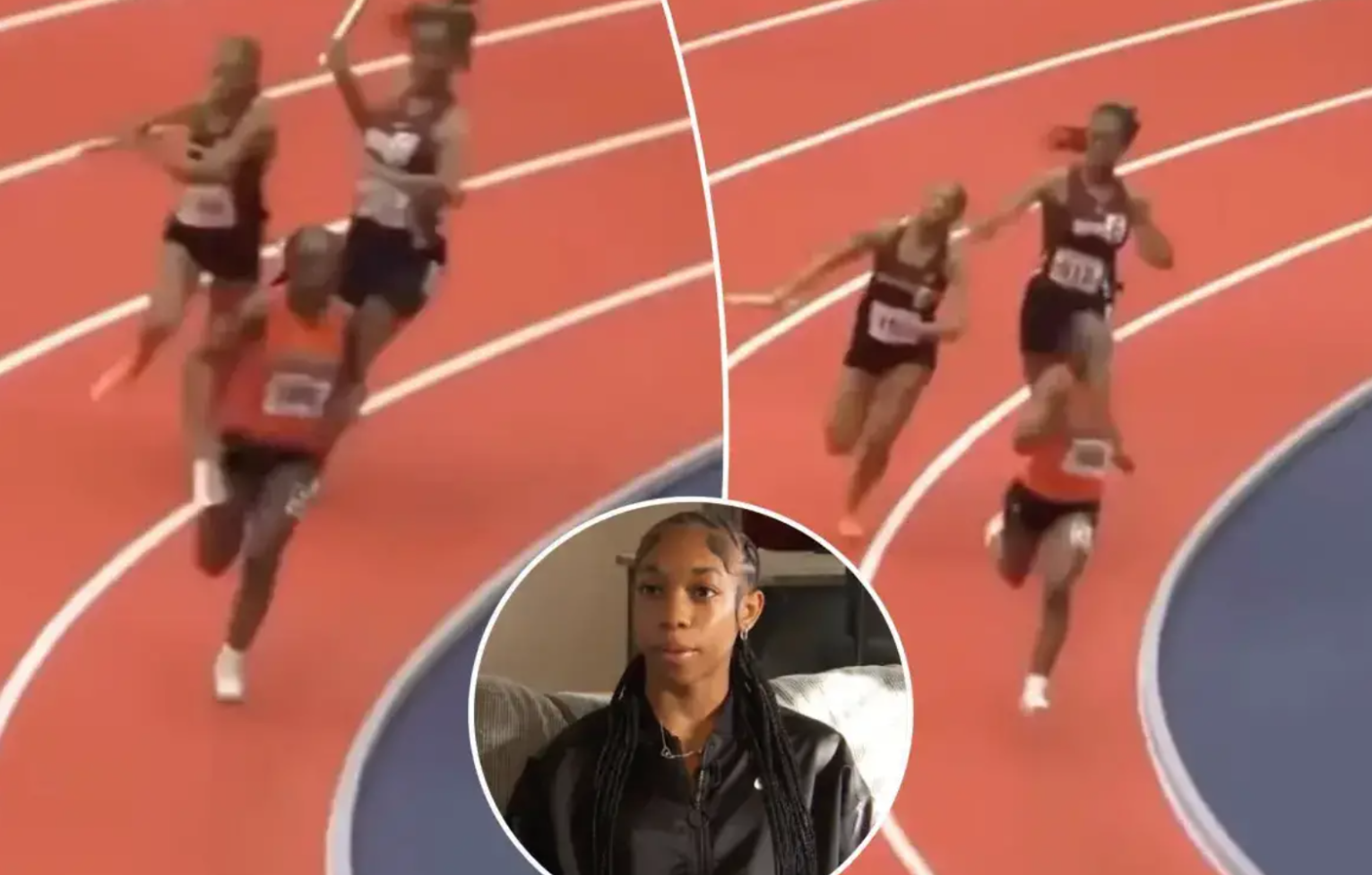New Findings from Lip Reading: An In-Depth Review of the VHSL Baton Incident and Its Effects on High School Sports
In the intense world of high school track competitions, every fraction of a second can determine the difference between victory and defeat. However, when emotions run high and tensions rise, unforeseen events can not only disrupt the race but also impact the athletes’ futures and reputations. A recent controversy at the VHSL Class 3 State Indoor Championships at Liberty University has sparked a heated debate after a confrontation between two relay runners escalated into a serious incident. In light of this, a detailed lip-reading analysis has shed light on the words exchanged in the pivotal moments before the baton was swung. This investigation dives deep into the incident, examines the evidence from different angles, and explores the far-reaching implications for high school athletics.
I. Setting the Scene: The Stage for Controversy
A. The Venue and Competitive Atmosphere
The VHSL State Indoor Championships, hosted at Liberty University, is widely considered one of the premier high school athletic events in the region. With its state-of-the-art facilities and electrifying atmosphere, the venue has been the backdrop for many memorable performances over the years. This year’s competition, particularly the much-anticipated 4×200m relay event, was no exception.
In a high-stakes race like the relay, where every moment counts, precision, coordination, and perfect timing are crucial. Teams train relentlessly for months to perfect their baton exchanges and sharpen their racing techniques. The 4×200 meter relay is not just a test of individual speed but a measure of teamwork, as every athlete must synchronize their efforts to achieve success. In this environment, even the slightest slip-up can lead to major consequences.
B. Rising Tensions and the Build-Up
The day of the race was filled with energy and anticipation. The stands were packed with coaches, family, and fans, all eager to witness the athletes give their best performances. The air was charged with excitement, as each team geared up for what promised to be one of the season’s most intense events.
However, behind the excitement, a more subtle tension was building. Past rivalries from previous meets, along with the pressure to earn state-level recognition, contributed to a palpable sense of stress in the air. As the teams took their marks and the race began, it was clear that the atmosphere was charged with emotions. This competitive environment created the perfect storm for an incident that would soon capture widespread attention.
The tension that had been brewing between the athletes and teams was about to boil over into something that would shake the high school sports community. What started as an athletic event quickly turned into a focal point for discussions about the pressure young athletes face, the intense rivalries that can fuel competitive behaviors, and the fine line between competitive spirit and aggression.
As the race progressed, it became evident that the pressure of the event was starting to take its toll. The athletes were pushing themselves to their limits, each striving for that elusive victory. In such a high-pressure environment, mistakes can happen, and what seemed to be a minor mishap during the baton exchange quickly escalated into something much more serious.
What followed would prompt a closer look at the conduct of athletes, the emotional toll of competition, and the need for better support systems in high school sports. The incident—caught on camera and shared across social media—quickly sparked a public outcry, with many questioning what led to such a breakdown in the middle of what should have been a celebratory event.
In the wake of the incident, fans, coaches, and even regulatory bodies began to re-examine the emotional and physical pressures that young athletes face during high-stakes competitions. The spotlight shone not only on the actions of the athletes involved but also on the broader issue of how the competitive landscape in high school sports may need to be reevaluated to ensure the well-being of all participants.
